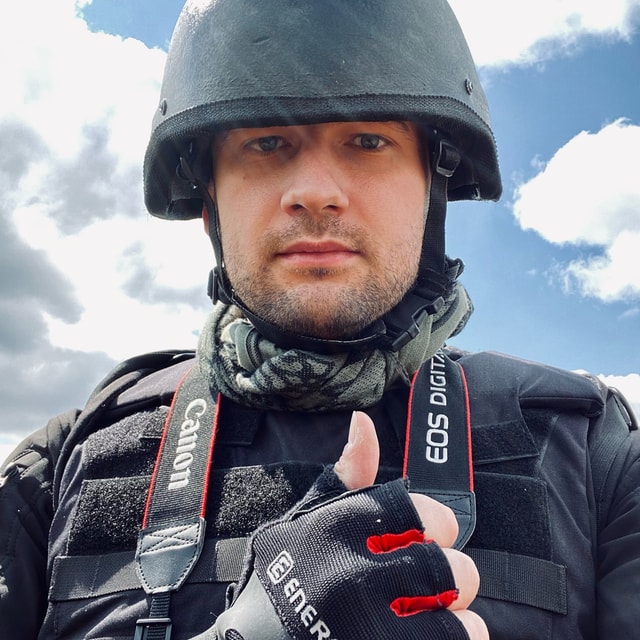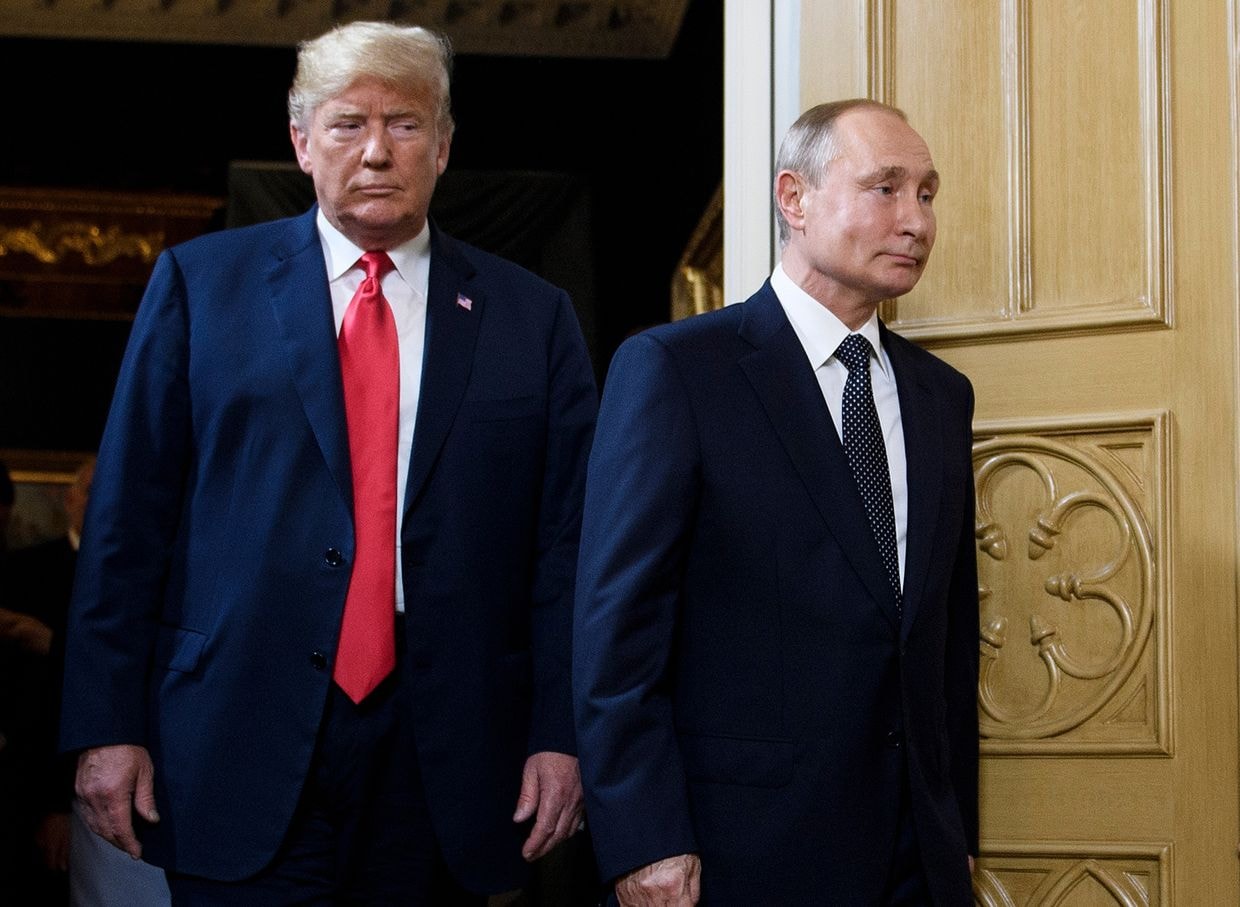Ukraine’s military expects massive arms supplies as Russia’s war deteriorates

On the eve of the third Ramstein summit, a meeting of over 40 nations backing Ukraine in Russia’s invasion, Kyiv is crying out for more weapons and munitions -- and says the West is failing to send enough assistance on time.
Russia’s grand offensive operation in Donbas, ongoing for almost 60 days, has not resulted in any major successes for the Kremlin. But the battle rages on, increasingly brutal and fierce, as the situation draws ever closer to a critical point for Ukraine’s military.
Ukraine is greatly outnumbered by Russian artillery, which has devastated cities and towns for the sake of the smallest advance on the battlefield. And Western aid, despite lofty pledges, is arriving way too slowly, or in such small quantities as to have little to no strategic effect. Some of it hasn’t arrived at all, according to official statements.
The June 15 meeting of Ukraine’s allies in Brussels is expected to finally make a difference.
But as of the day before, Kyiv still does not know if it is going to get all that is necessary to repel Russia and deny its appetite for an even wider conquest.
As of mid-June, Russia has not reached any large operational success in Donbas, although it has made steady, limited territorial gains.
It has not managed to encircle and destroy a large Ukrainian military grouping in the Sievierodonetsk-Lysychansk area or sever key Ukrainian ground lines of communication, despite having concentrated the bulk of its military power in just one area.
Attempts to impose a wider encirclement in the Izium area have not been successful either, although the Kremlin has managed to advance towards the northern bank of the Siverskiy Donets River in Donetsk Oblast.
Ukrainian units have continued to engage Russian forces in extreme urban warfare in Sievierodonetsk, maintaining firm control of the city’s giant industrial zone. However, according to the latest reports, Russian troops managed to crush the third and the last bridge connecting Sievierodonetsk and Lysychansk, the twin cities divided by the river, putting the Ukrainian garrison in jeopardy.
The Russian military has also had no success trying to cross the T1302 Bakhmut-Lysychansk highway, although it has made some minor gains threatening the town of Zolote, an important Ukrainian strongpoint.
The massive Russian concentration of military power in Donbas at the expense of other areas enabled Ukraine’s military to launch limited but successful counter-offensives in Kherson Oblast, such as at the Inhulets River crossing, where Ukraine gained a foothold.
However, the successful defensive operation, particularly in Donbas, comes at an extremely heavy price: According to Ukrainian officials, Ukraine’s military is losing up to 100 soldiers per day, with another 500 wounded.
In a war where artillery power constitutes the bulk of success, Ukraine is increasingly outnumbered, down to the ratio of 10-15 to 1 in terms of artillery pieces available in combat, as voiced by the deputy head of Ukraine’s Chief Directorate for Intelligence Vadym Skybytskiy.
Intense artillery war in Donbas is draining Ukrainian stocks of old Soviet standard 152-millimeter rounds, and minor supplies from former Warsaw Pact nations are not compensating for Ukraine’s extremely high burn rate.
In this regard, Ukraine is getting increasingly dependent on Western-provided 155-millimeter NATO standard artillery pieces and munitions. As of now, Ukraine has deployed just nearly 150 pieces of Western artillery in Donbas and elsewhere, mainly U.S.-provided M777s, French CAESAR systems, Norwegian-provided M109A3GNs, or Italian FH70s.
But even with the Western artillery’s technological superiority over Soviet/Russian pieces, such quantities are far from sufficient. Russia’s quantitative supremacy, in combination with its limitless ammunition stocks, is still decisive.
On June 13, Ukraine’s presidential advisor Mykailo Podolyak announced that for Ukraine to “end the war,” it needs to reach a parity rate with what Russia has in the field. He voiced astonishing figures featuring nearly 1,000 howitzers, 300 multiple launch rocket systems (MLRS), 500 tanks, 2,000 armored personnel carriers and infantry fighting vehicles, and 1,000 drones.
Such numbers constitute a full-fledged armed force the military power of which is roughly comparable to the militaries of the United Kingdom and Germany combined.
For reference, according to the Military Balance 2021 database, U.S. Army and U.S. Marine Corps combined have a total of 2,509 main battle tanks (and 3,700 in storage), a total of 2,022 towed and self-propelled 155-millimeter artillery pieces, and 600 rocket systems.
Britain has 227 tanks, 89 155-millimeter artillery pieces, and 35 MLRSs. France has 222 tanks, 130 artillery pieces, and just 13 M270 systems. Italy has 200 tanks and 232 artillery pieces, particularly the FH70 it has already donated to Ukraine, 22 MLRSs. Germany, in its turn, has 245 tanks, 121 PzH 2000 howitzers, and 41 MLRSs M270s.
In other terms, Podolyak has requested that Ukraine get nearly 40% of the artillery fleet, 37% of rocket systems, and 14% of tanks available at the disposal of the U.S., Britain, Italy, France, and Germany combined.
The presented figures likely constitute an upper limit, a best-case scenario, with which Ukraine goes to Brussels. But, according to George Barros of the Institute for the Study of War, a U.S.-based defense think tank, “Western governments must take Ukrainian requests seriously and ensure that Western military aid to Ukraine meets the actual on-the-ground requirements for Ukraine's defense.”
“Western aid flows to Ukraine should also set favorable conditions for Ukraine to be able to exploit Russia's future operational pause after Russia's campaign in Donbas culminates around the battle of Sievierodonetsk,” the expert told The Kyiv Independent.

Frustration is growing in Kyiv’s high corners, as well as in the media, as the Western effort “to move heaven and earth” to make sure Ukraine gets all it needs for a victory, in the words of the U.S. Secretary of Defense Lloyd Austin, is not felt in Ukraine in quite the same way.
In the latest aid package worth $700 million, U.S. President Joe Biden particularly committed four rocket systems HIMARS, in addition to over 100 M777 family howitzers already deployed to Ukraine previously.
More 3 M270 MLRS systems are expected from the U.K. However, according to a Kyiv Independent source in Ukraine’s government, the seemingly frustrating seven rocket systems are nothing but a trial batch for training and first combat use in Ukraine. Many consider these advanced systems as a game-changing weapon against Russia’s communications lines and military groupings.
Still, Ukraine is not happy about the amount nor the pace of supplies of weapons and munitions from the West. According to Ukraine’s Deputy Defense Minister Hanna Malyar, Kyiv is currently getting just 10% of what it needs to counter Russia’s military.
A lot now depends on whether Ukraine gets good news from the Ramstein conference on June 15.
And, according to a Kyiv Independent source close to the talks with Western allies, despite the difficult situation in Donbas, Ukraine is not losing this war. According to the source, munitions hunger was quite expected and is something the Ukrainian side has been talking about with the West for quite a long time.
Despite all the doom and gloom in media regarding Ukraine’s prospects in war, even with such a drastic disparity in heavy weapons with such a radical concentration of Russian military power in Donbas, Ukraine is quite successful at countering Russian operations and reducing it to very limited and extremely costly advancements, the official said.
At the same time, much wider Western assistance will ensure a strategic Ukrainian success with far less blood spilled and in a far shorter perspective, and the Pentagon has all the numbers Ukraine is asking for.
But for that, Ukraine still needs at least “a couple of hundred howitzers” and at least 100 rocket systems provided as soon as possible, the source said.









